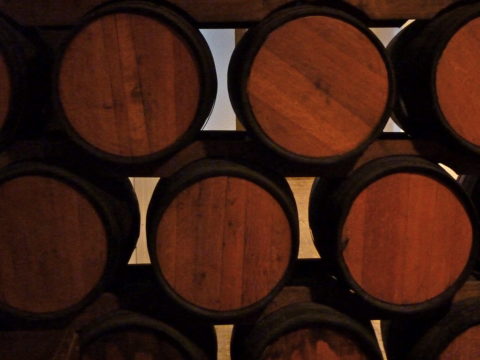A guest post at Founding Questions from Allen discusses his many years of growing grapes:

“Pelee Island winery” by John Kannenberg is licensed under CC BY-NC-ND 2.0
I grew grapes for wine, the noble Vitis Vinifera, for close to 30 years. My heart went out of it when I saw the advent of celebrity wine producers. I could stomach the idea of box wine for women with their cats, after all what else did they have, but the very idea that celebrity itself might indicate discernment or ability was a bridge too far for me.
A good wine can enhance a meal. In fact given any other choice I will choose water with lemon if a decent wine is not available. The acid in the wine, or from the lemon, keeps the palate clear and lets you get more flavor out of a well done meal. Then there is the allure, “why yes I grow my own grapes and make my own wine my dear, care for a glass?” If there is a better way to get a lady to throw her panties at a farmer I don’t know what it is. Oh, and that is FNG, that country song, “She Thinks My Tractor’s Sexy”. No she doesn’t, you damn dope.
I know it sounds trite but good wine starts in the dirt and everything in the dirt ends up in the wine. I had sandy, rocky soil with minimal amounts of organic material. Vines need to struggle to make good wine grapes. I did fertilize but with composted organic material and a mixture of manures. If your manure still contain some amount of ammonia in it the wine will have an interesting bouquet so patience grasshopper, give it 2-3 years to compost well. Watering, I always drip irrigated but sparingly. If you’ve got city water its treatment chemicals will end up in the wine so avoid it as much as possible. I had my own deep water wells so I didn’t have that worry. It’s the same with pest treatments. I planted a certain type of tree near the vineyard that Ladybugs were partial to. Ladybugs do a number on most common insect pests.
So you’ve got your dirt now what? Dig son dig. My preferred vine and row spacing was 8 feet by 8 feet, 8 feet between vines with rows 8 feet apart. I dug a trench approximately 3 feet wide by 3 feet deep for each row of vines. Before you ask, yes I did it by hand. Machinery can actually make things worse as it can compact the soil to rock hard consistency where it isn’t digging. The idea here is to get the vines’ roots to run deep and spread. If your soil is especially compacted a power auger is useful to break up the soil.
Next up you need a trellis because grapes require a lot of support. I used a four wire trellis with two arms to spread the canopy out. The more leaf area you have the more photosynthesis and consequently higher growth you will have. It also will drive the acid sugar balance in the grapes. You’ll have to experiment with it to find out what works best for your location and microclimate. Fortunately you have that 4 to 5 years before you get a good crop.





